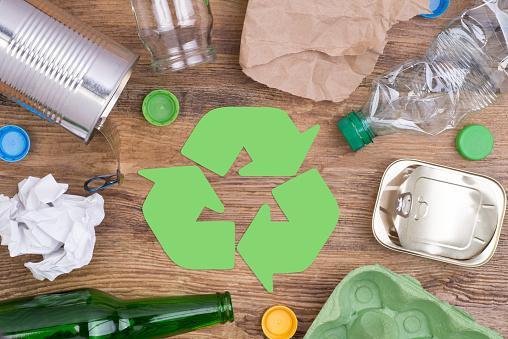Recycling is an important process that helps reduce waste and conserve resources. Paper, metal, wood, glass, and plastics are commonly recycled materials. Here’s a general overview of how each of these materials is recycled:
Paper:
- Collection: Paper waste is collected from various sources, such as offices, schools, and households.
- Sorting: The collected paper is sorted based on its type and quality. It is important to separate different types of paper, like newspaper, cardboard, and office paper**.
- Shredding and pulping: The sorted paper is shredded into small pieces and mixed with water to create a pulp.
- Cleaning and filtering: The pulp goes through a cleaning process to remove any contaminants like ink or staples. It is then filtered to remove any remaining debris.
- De-inking (optional): If the recycled paper is intended for producing white or high-quality paper, a de-inking process may be employed to remove inks and dyes.
- Papermaking: The cleaned pulp is mixed with new wood fibers (called virgin fibers) and processed through machines to produce new paper products, such as newspapers, cardboard, or office paper.
Metal:
- Collection: Metal waste, including aluminum cans, steel scraps, and other metal objects, is collected from recycling bins and scrap metal yards.
- Sorting: The collected metal is sorted by type, such as aluminum, steel, or copper.
- Shredding and melting: The sorted metal is shredded into small pieces or crushed to facilitate melting. The metal pieces are then melted down in a furnace.
- Purification: During the melting process, impurities like paint, coatings, or other metals are removed.
- Solidifying and shaping: The molten metal is solidified and shaped into new products, such as cans, car parts, or construction materials.
Wood:
- Collection: Wood waste, including furniture, pallets, or construction debris, is collected from various sources.
- Sorting: The collected wood is sorted based on its type and quality. It is important to separate treated and untreated wood.
- Grinding and chipping: The wood waste is processed through grinders or chippers to create wood chips or sawdust.
- Repurposing: The processed wood waste can be used for various purposes, such as mulch, animal bedding, or composite wood products like particleboard or medium-density fiberboard (MDF). In some cases, it can also be used for bioenergy generation.
Glass:
- Collection: Glass containers, such as bottles and jars, are collected from recycling bins or dedicated glass collection points.
- Sorting: The collected glass is sorted by color (clear, green, brown) since different colors cannot be mixed during the recycling process.
- Crushing and melting: The sorted glass is crushed into small pieces (cullet) and then melted in a furnace at high temperatures.
- Refining and forming: The molten glass is refined to remove any impurities and shaped into new glass products, such as bottles, jars, or fiberglass.
Plastics:
- Collection: Plastic waste, including bottles, containers, and packaging, is collected from recycling bins or municipal waste management facilities.
- Sorting: The collected plastic is sorted based on its resin type (e.g., PET, HDPE, PVC) using automated or manual sorting processes.
- Shredding and washing: The sorted plastic is shredded into small flakes or pieces and washed to remove any contaminants.
- Melting and pelletizing: The cleaned plastic is melted and formed into small pellets, which can be used.

